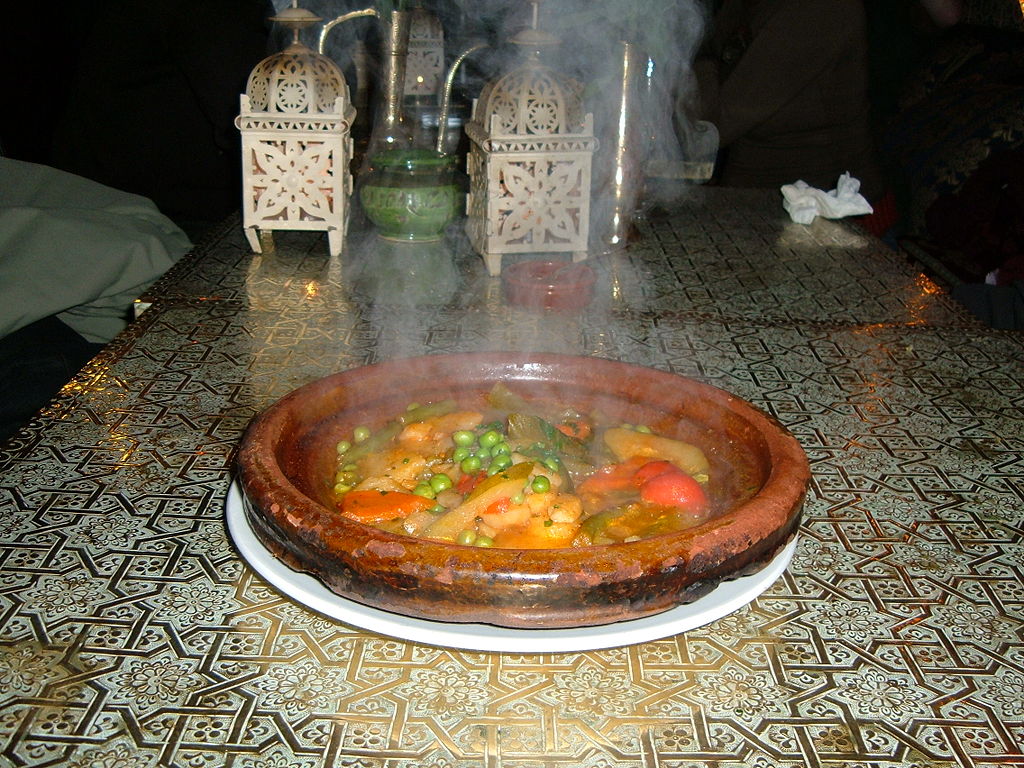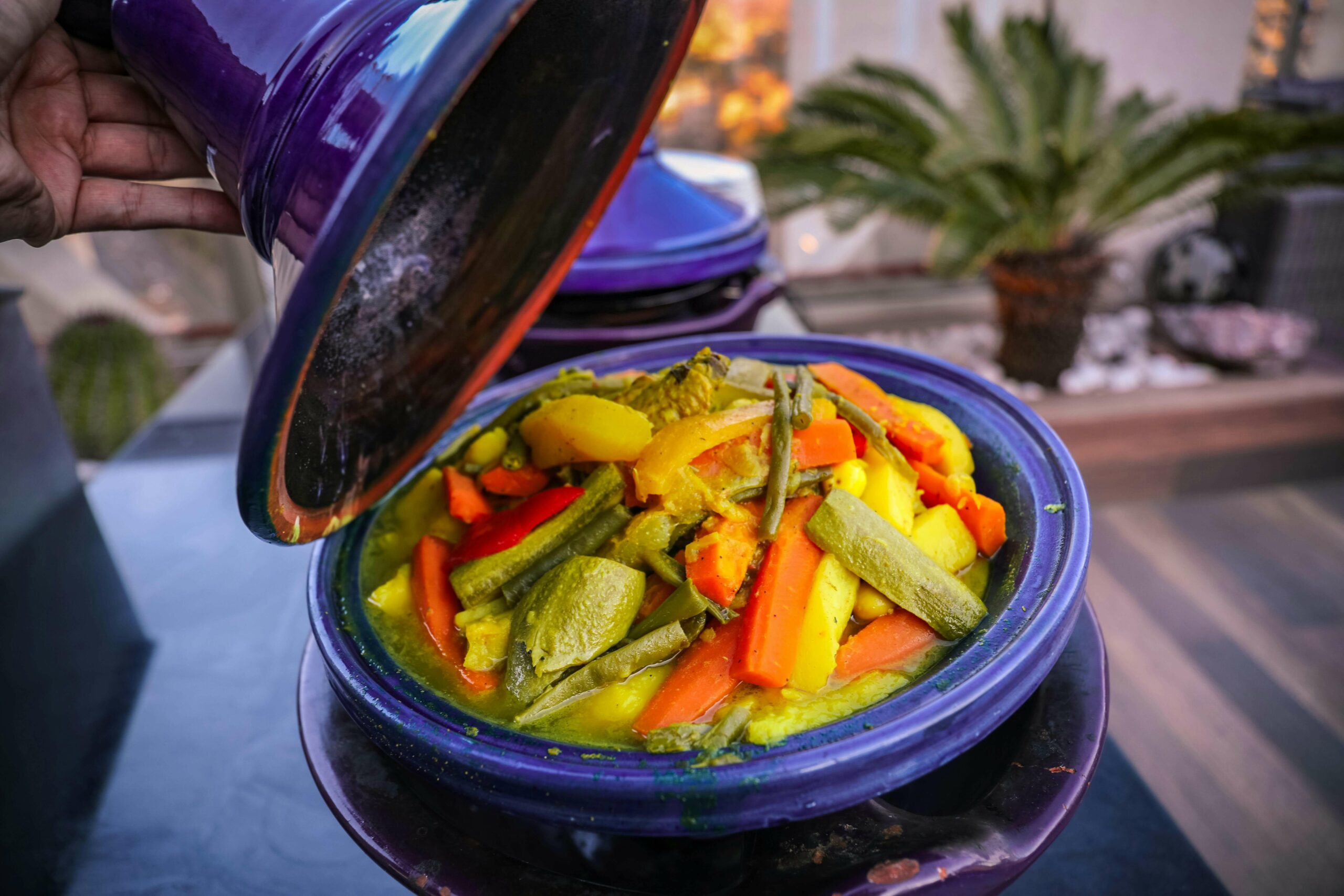Table of Contents
- Introduction to Tajine
- History and Origins of Tajine
- Ingredients and Preparation
- Variations of Tajine
- Tajine and Culture
- Tips for Preparing the Perfect Tajine
- Conclusion
Introduction to Tajine
The tajine is a beloved dish in North African cuisine, particularly in Tunisia, Algeria, and Morocco. It takes its name from the traditional cooking pot used to prepare it, a clay vessel with a conical lid that retains heat and moisture, ensuring intense flavors and tender, aromatic cooking. Perfect for slow cooking, this dish preserves nutrients and enhances the flavors of each ingredient, making it an iconic dish of Maghrebi cuisine. With regional variations ranging from meat tajines to vegetarian ones, this dish offers something for every palate.
History and Origins of Tajine
The Maghrebi Roots
This dish has ancient origins, dating back to the time of the Berber tribes of the Maghreb, who used clay pots to prepare their meals. This tradition spread across North Africa, thanks to the availability of natural materials like clay, which allowed for even and slow cooking. The term “tajine” refers to both the pot and the dish cooked within it, symbolizing the culinary tradition of the Maghreb.
Influences and Regional Variations
Each country in the Maghreb has developed its own versions of the tajine. In Morocco, for example, it is often prepared with meat (lamb, beef, or chicken) and enriched with dried fruits like prunes and apricots, creating a unique balance between sweet and savory. In Tunisia, it looks different and resembles more of a baked omelet, with meat, eggs, and cheese. Although they share the name, these variations have distinct flavors and preparations, highlighting the cultural diversity of North African cuisine.
The Tunisian Tajine
The Tunisian tajine is unique compared to other Maghrebi versions: it is not just a stew but more like a savory pie, prepared with meat, eggs, and cheese. This variant can be cooked in a traditional tajine pot or in the oven, resulting in a compact and flavorful dish, often served with fresh Tunisian bread. The Tunisian dish represents a fusion of tradition and innovation, enriching Tunisian cuisine with a versatile and flavorful dish.
Ingredients and Preparation
Main Ingredients
One of the most interesting aspects of the tajine is its versatility. Its ingredients vary depending on the season and local preferences, allowing for a wide variety of recipes. The main ingredients include:
- Meat: lamb, beef, chicken, or fish, depending on the version.
- Vegetables: potatoes, carrots, zucchini, onions, and peppers are commonly used.
- Spices: the aromatic richness comes from spices like cumin, ginger, turmeric, saffron, and cinnamon.
- Dried fruits: in the Moroccan version, prunes, raisins, and almonds are added for a touch of sweetness.
- Fresh herbs: cilantro and parsley add freshness to the dish.
Preparing the Tajine
Slow cooking is essential to achieve the distinctive texture and flavors of the tajine. The clay pot retains heat, and the cooking happens slowly, blending all the ingredients into an explosion of flavors. The main steps include:
- Prepare the base: start by sautéing onions and spices in the pot to create an aromatic base.
- Add meat and vegetables: arrange the ingredients in the pot and let them cook over low heat.
- Slow cooking: cover and let it cook for hours, allowing the flavors to meld.
- Finishing with dried fruits: for versions with dried fruits, add them at the end for a touch of sweetness.
Variations of Tajine
Chicken Tajine with Lemon and Olives
One of the most beloved variations is the chicken tajine with lemon and olives. The dish combines chicken, preserved lemon, and green olives, with spices like ginger, turmeric, and cilantro for a warm note. The preserved lemon adds acidity and freshness to the dish, which pairs perfectly with bread or couscous.
Lamb Tajine with Prunes and Almonds
Another much-loved variation is the lamb tajine with prunes and almonds. This recipe combines lamb with sweet prunes and crunchy almonds, enriched with spices like cinnamon and saffron. The slow cooking makes the meat tender, and the dish is often served on special occasions.
Vegetarian Tajine
For those who prefer a meatless version, the vegetarian tajine is an excellent alternative. Carrots, zucchini, potatoes, and other seasonal vegetables are cooked with aromatic spices. This dish is light, nutritious, and full of flavor, perfect for those seeking a healthy and tasty meal.
Tajine and Culture
In Tunisia and the Maghreb, the tajine is a symbol of hospitality and sharing. Families gather around the tajine pot, sharing the meal and stories of life. The tradition of eating with one’s hands and using bread to scoop up the food represents a ritual of connection and conviviality. Sharing this specialty together is a moment of unity, whether during festivities or in daily life.
Tips for Preparing the Perfect Tajine
- Use a tajine pot: using the traditional pot makes a difference, but a covered casserole dish can be used if necessary.
- Marinate the meat: letting the meat marinate with spices enhances its flavor.
- Cook slowly: patience is the key to a perfect recipe; slow cooking is essential for the best results.
Conclusion
The tajine represents the culture and culinary tradition of Tunisia and the Maghreb. Its variations, intense flavors, and cultural importance make this dish a unique experience. Whether it’s the Tunisian version or the Moroccan one, preparing and sharing it is a way to savor the history and conviviality of North Africa.
We leave you with a short video by Chaf Barbieri.
Read our other articles.






